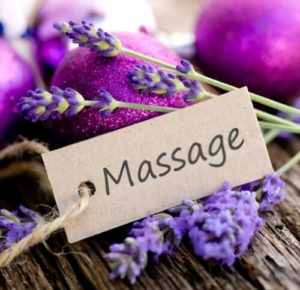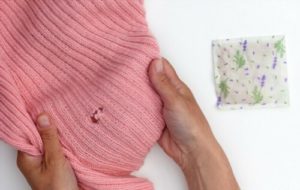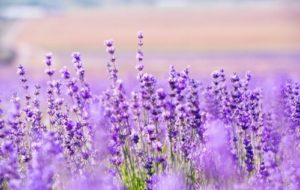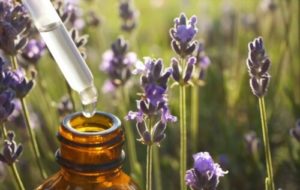
LAVENDER OIL PRODUCT DESCRIPTION
When you think of lavender, the picture that most likely comes to mind is common lavender (Lavandula Angustifolia), also known as English lavender. Despite the name it is not native to England and was introduced there by the Romans, and instead originated from the Mediterranean region, northeast Africa, and southwestern Asia. The name stems from the Latin word ‘lavare’ meaning ‘to wash” since the Romans used lavender to scent their baths, beds and clothes.
Lavender has been popular for over 2500 years for its wonderful aroma and beautiful blooms, in addition to its culinary usage and therapeutic properties. Ancient Egyptians used lavender in the mummification process to fragrance the corpse, whilst the Ancient Greeks recognised its therapeutic properties and used it to ease various ailments including headaches and indigestion, and the Romans utilised the plant in a number of ways, for washing, cooking, repelling insects, and taking advantage of its antiseptic properties to dress battle wounds. Both the Ancient Greeks and Romans produced a “fever ointment” from lavender.
During the 16th century the glove makers in France who scented their wares with lavender escaped the cholera epidemic. Likewise in the 17th century, lavender was used as a remedy for the Great Plague in London and people wore a sprig on each wrist to protect against infection. Blossoms were also sold to mask the smell of the dead.
Lavender was a favourite with the European royals, including Charles VI and Louis XIV of France, and Queen Elizabeth I and Queen Victoria of England. The demand for lavender oil in the 19th century for it’s many uses within the perfume industry, earned it the nickname “the blue gold”. Today lavender oil remains the most popular of the essential aroma oils across the globe. It is renowned for its relaxing qualities and ability to induce sleep.
The oil is extracted from the stems and blossoms by way of steam distillation, and offers a wide range of therapeutic benefits. So what exactly is lavender oil good for, and how do you use it?
HOW TO USE LAVENDER OIL
The therapeutic properties of natural lavender oil can be administered by way of a diffuser, vaporiser, topical application, or as a massage.
LAVENDER OIL USES AND BENEFITS
Lavender Oil Diffuser Benefits:
 The main constituents in lavender oil, linalool linalyl acetate, help to support the limbic system and balance serotonin levels, and subsequently induce relaxation, and reduce stress, tension, anxiety, nervousness, restlessness, and depression.
The main constituents in lavender oil, linalool linalyl acetate, help to support the limbic system and balance serotonin levels, and subsequently induce relaxation, and reduce stress, tension, anxiety, nervousness, restlessness, and depression.- Traditionally used for its sedative properties, lavender remains the most popular natural treatment for insomnia, sleep apnoea and improving overall sleep quality. Lavender oil helps by interacting with the neurotransmitter GABA, to calm the nervous system and install mental calm and relaxation, and reduce negativity such as anger, irritation or restlessness to promote sleep. Meanwhile, it also has the ability to increase slow-wave sleep which allows for muscle relaxation, slows the heart rate and lowers blood pressure and body temperature, and thus promotes a more restful sleep. Lavender may also stimulate the release of the sleep hormone, melatonin, which helps to control the sleep cycle.
- Lavender oil may help to promote heart health and decrease the risk of of a stroke and heart attack. A study demonstrated that inhaling lavender oil after heart surgery reduced both blood pressure and heart rate.
- Studies have shown lavender oil to be a natural remedy to relieve pain from headaches and migraines, and reduces nausea. Trials regarding its effect on migraines, showed that after just 15 minutes of inhaling lavender oil, the severity of pain was substantially reduced and it was concluded that the “inhalation of lavender essential oil may be an effective and safe treatment modality in acute management of migraine headaches”. A reduction was indicated in both the frequency and severity of migraines. Studies regarding its use for the relief of a headache were also extremely positive, finding that all participants responded favourably.
- The anti-inflammatory effect of lavender also benefits bronchial asthma, relieving allergic inflammation and mucus hyperplasia.
 Hot flushes is one of the most common affects of the menopause, and yet there remains no effective treatment. However, inhaling lavender for 20 minutes twice a day has been shown to have a positive affect in reducing the hot flashes. Likewise it also relieves premenstrual emotional symptoms.
Hot flushes is one of the most common affects of the menopause, and yet there remains no effective treatment. However, inhaling lavender for 20 minutes twice a day has been shown to have a positive affect in reducing the hot flashes. Likewise it also relieves premenstrual emotional symptoms. - Lavender oil’s ability to calm the mind and decrease stress can also help to boost stamina and memory, create clear thinking, and enhance concentration and focus. This was aptly demonstrated in a study where the workers who inhaled the oil during their break returned refreshed and focused and did not experience the usual deterioration in the afternoon’s work.
- By quietening an overactive mind, improving focus and reducing hyperactivity, lavender oil can help to manage the symptoms of ADHD.
- The aroma of lavender is totally abhorrent for mosquitoes, thanks to the presence of the linalool which systematically overloads their olfactory organs, in a similar manner to deet. It is also effective against ants, bed bugs, chiggers, cockroaches, fleas, flies, gnats, moths, spiders, ticks and wasps.
Lavender Oil Topical Application Benefits:
 Lavender oil has anti-inflammatory, analgesic, antibacterial, astringent, moisturising, cleansing, and skin healing properties, therefore making it highly suitable as a gentle treatment for skin ailments. Suitable for all skin types, it reduces inflammation and itching, and eases skin eczema, psoriasis, acne and general inflammation, and soothes irritation such as sunburn, shaving burn/rash, diaper rash, etc. Lavender oil accelerates wound healing and acts as a disinfectant and pain reliever to heal minor burns, cuts, scratches and bug bites. It also reduces the appearance of fine lines and wrinkles and evens the skin tone.
Lavender oil has anti-inflammatory, analgesic, antibacterial, astringent, moisturising, cleansing, and skin healing properties, therefore making it highly suitable as a gentle treatment for skin ailments. Suitable for all skin types, it reduces inflammation and itching, and eases skin eczema, psoriasis, acne and general inflammation, and soothes irritation such as sunburn, shaving burn/rash, diaper rash, etc. Lavender oil accelerates wound healing and acts as a disinfectant and pain reliever to heal minor burns, cuts, scratches and bug bites. It also reduces the appearance of fine lines and wrinkles and evens the skin tone. - The antifungal properties can eliminate fungal infections such as nail fungi, skin infections and Athlete’s foot. Furthermore a study confirmed that it can also combat antifungal-resistant infections.
- Lavender oil promotes hair growth and thickness, and is proclaimed to be effective for the treatment of alopecia areata, with a study demonstrating that hair growth can be increased by up to 44% with prolonged use. It’s antibacterial and antifungal properties ensure good scalp health.
- The aroma of lavender is totally abhorrent for mosquitoes, due to the presence of the linalool which overloads their olfactory organs, in a similar manner to deet. It is also effective against ants, bed bugs, chiggers, cockroaches, fleas, flies, gnats, moths, spiders, ticks and wasps. The soothing analgesic and anti-inflammatory properties of lavender can relieve the stinging and itching of bites.
Lavender Oil Massage Benefits:
 When diluted with a carrier oil, a massage with lavender oil with its mild analgesic and antispasmodic properties can relieve the pain and discomfort of stiff and sore muscles, and relieve the symptoms of osteoarthritis. Massage into the neck and temples to reduce a tension headache, and include the temples as well to relieve a cluster headache, migraine or motion sickness.
When diluted with a carrier oil, a massage with lavender oil with its mild analgesic and antispasmodic properties can relieve the pain and discomfort of stiff and sore muscles, and relieve the symptoms of osteoarthritis. Massage into the neck and temples to reduce a tension headache, and include the temples as well to relieve a cluster headache, migraine or motion sickness.
Additional Lavender Oil Applications:
 Relieve sore and aching feet by adding a few drops to a bowl of warm water. It’s relaxing, anti-inflammatory, anti-bacterial, anti-fungal, and sedative properties can provide instant relief. Athlete’s Foot, fungal infections of the nails, cuts and abrasions are soothed and treated, and sore joints are eased.
Relieve sore and aching feet by adding a few drops to a bowl of warm water. It’s relaxing, anti-inflammatory, anti-bacterial, anti-fungal, and sedative properties can provide instant relief. Athlete’s Foot, fungal infections of the nails, cuts and abrasions are soothed and treated, and sore joints are eased.- Mix a few drops of lavender oil to a bath product and add to a warm bath to soothe away aches and pains, and administer complete relaxation. Particularly helpful to reduce hot flashes in menopause and relieve premenstrual emotional symptoms.
- Dilute lavender oil in some water or a lightweight oil and rub or spritz onto the skin as a natural chemical-free insect repellent to keep mosquitoes away. Alternatively add a few drops to your favourite body lotion or carrier oil and run into the skin.
- Add some lavender oil to a tissue, cotton pad or a fabric pad (or add some dried rice to a bag and scent with the oil) and place/hang in your wardrobe to deter moths, silverfish, carpet beetles and other bugs which can damage your clothing.
PLANT DESCRIPTION
 Lavandula (common name lavender) is a genus of 47 known species of flowering plants in the mint family, Lamiaceae, and is the most prominent and widely cultivated variety. It is native to Europe, Asia and Africa, although it is now cultivated worldwide. Lavender is an evergreen, easy to grow perennial shrub that can grow up to 1 metre tall, and has a silver-green stem and leaves. The flowers appear in whorls, on spikes which rise above the foliage, and are commonly a bluish hue – lavender, blue, violet or lilac, although blackish purple and yellowish do exist in some wild species. Extremely hardy, to the degree that it will tolerate neglect, lavender just requires full sun and good drainage, preferring drought-like conditions when established.
Lavandula (common name lavender) is a genus of 47 known species of flowering plants in the mint family, Lamiaceae, and is the most prominent and widely cultivated variety. It is native to Europe, Asia and Africa, although it is now cultivated worldwide. Lavender is an evergreen, easy to grow perennial shrub that can grow up to 1 metre tall, and has a silver-green stem and leaves. The flowers appear in whorls, on spikes which rise above the foliage, and are commonly a bluish hue – lavender, blue, violet or lilac, although blackish purple and yellowish do exist in some wild species. Extremely hardy, to the degree that it will tolerate neglect, lavender just requires full sun and good drainage, preferring drought-like conditions when established.
BASIC PROPERTIES
Analgesic, anti-inflammatory, antibacterial, antifungal, antioxidant, antiseptic, antispasmodic, calmative, mood stabiliser, sedative.
SOURCING LAVENDER OIL
 When searching for a natural oil or essential oil, it is always best to look for an oil which has been manufactured from start to finish with one souce, thus ensuring its integrity. All natural oils should be collaborated with certification.
When searching for a natural oil or essential oil, it is always best to look for an oil which has been manufactured from start to finish with one souce, thus ensuring its integrity. All natural oils should be collaborated with certification.
If you would like to add violet oil to your oil collection, look no further than Nefertiti for natural oils and herbs.
Nefertiti uses best practises, natural fertilisers only, and their unique experience, to produce the best plants for their exclusive use, from their own farm in Al Fayoum, one of the richest agricultural regions in Egypt. The oils are extracted in their own factory, using the environmentally friendly fashion of modern cold press technology or steam distillation, using no other solvents, and ensuring a constant supply of optimum high quality oils.
All natural oils produced using the cold press method are done under the control of the Egyptian State and the Egyptian Ministry of Health. In recognition of their never-ending strive for quality, all of the products are certified. Certifications obtained include: COA certificates and ISO awards in Quality Management System, Environmental management system, Occupational Health & Safety, Food Safety Management System, to name just a few.
OILS THAT BLEND WELL WITH LAVENDER OIL
Lavender blends well with chamomile, eucalyptus, frankincense, grapefruit, lemongrass, peppermint, tea tree.
CONTRAINDICATIONS
Lavender oil should never be applied directly to the skin due to its high concentration and must be diluted with a carrier oil. Recommended ratio: 1 drop to 5ml oil.
Avoid use during pregnancy and breast-feeding.
